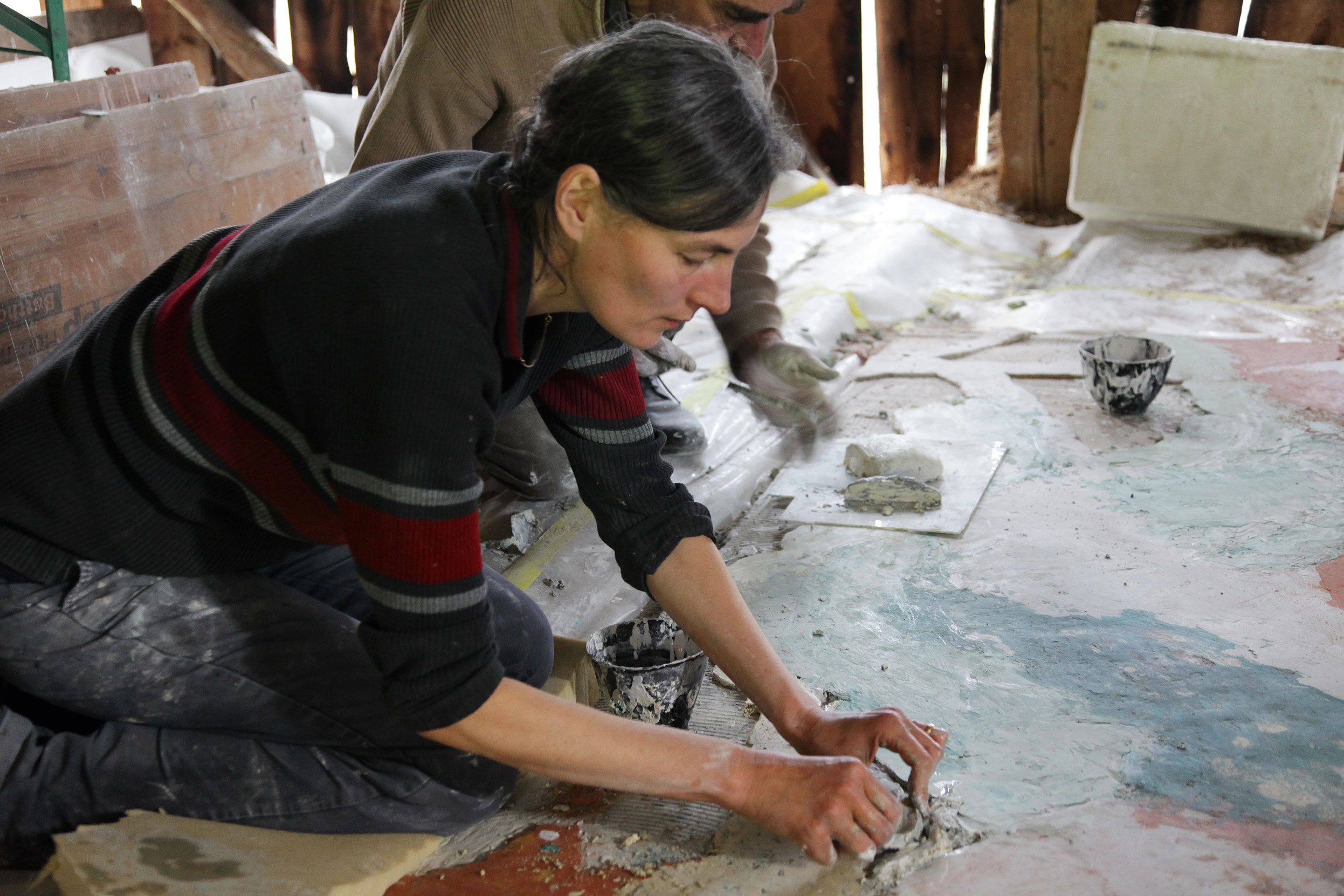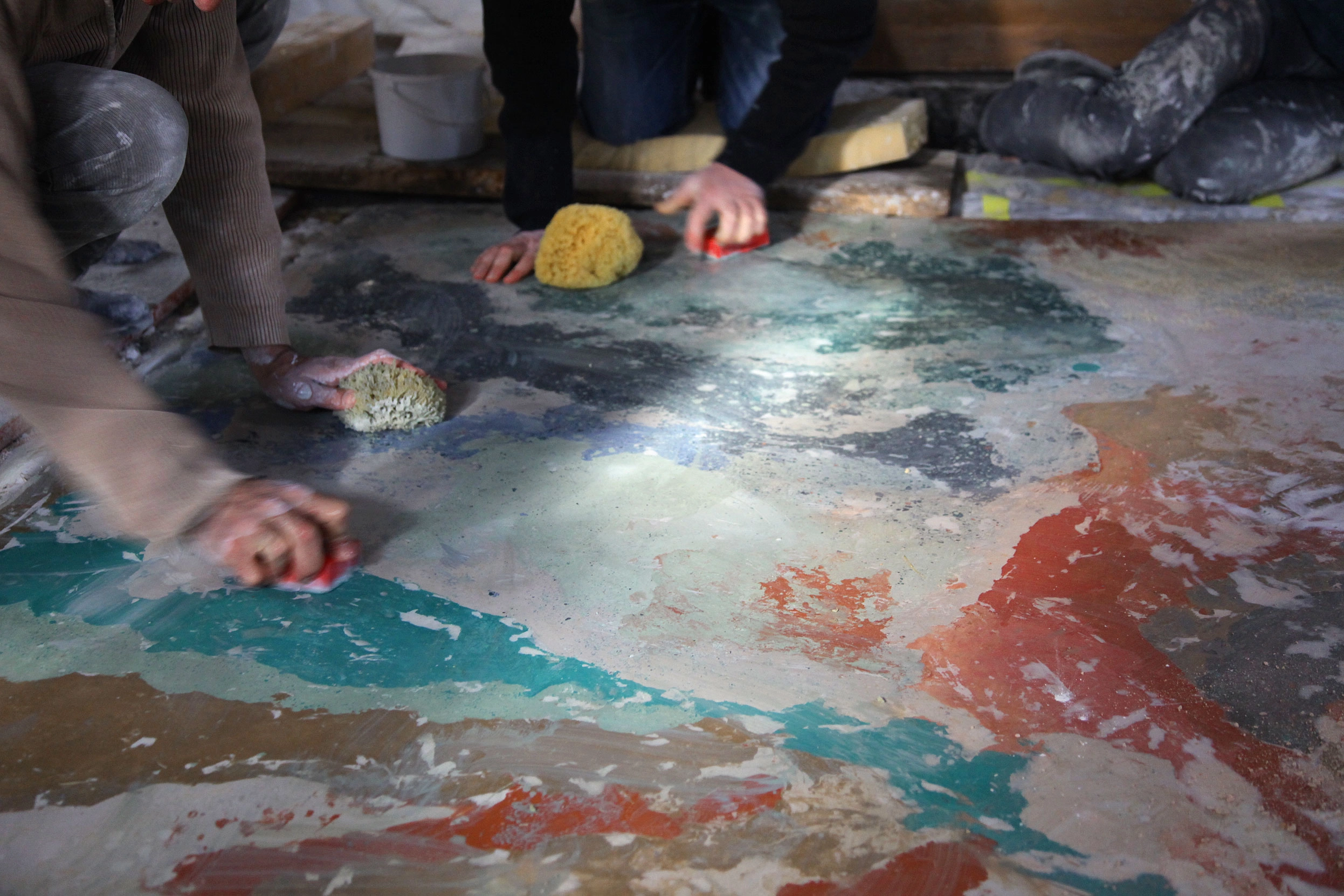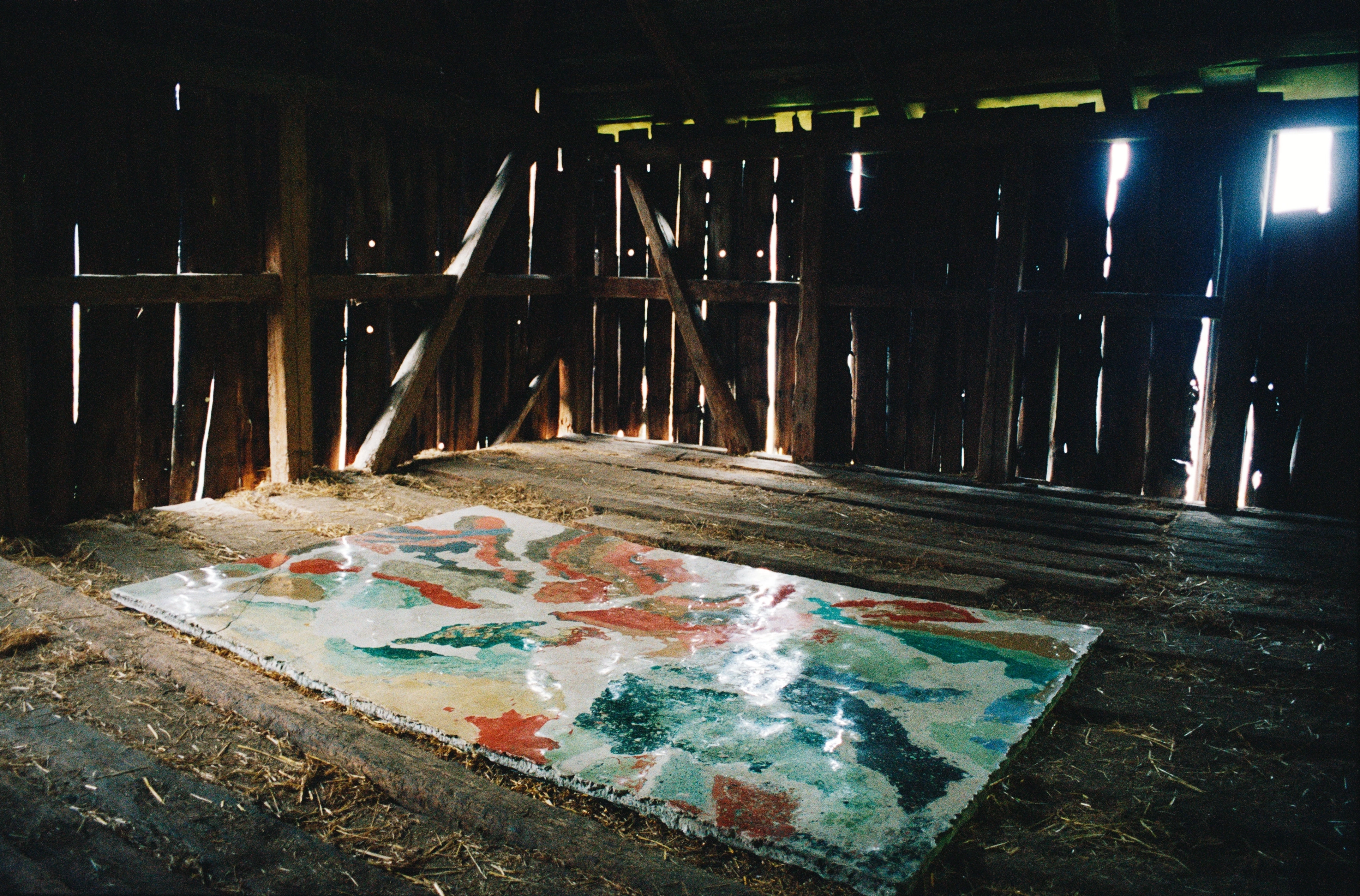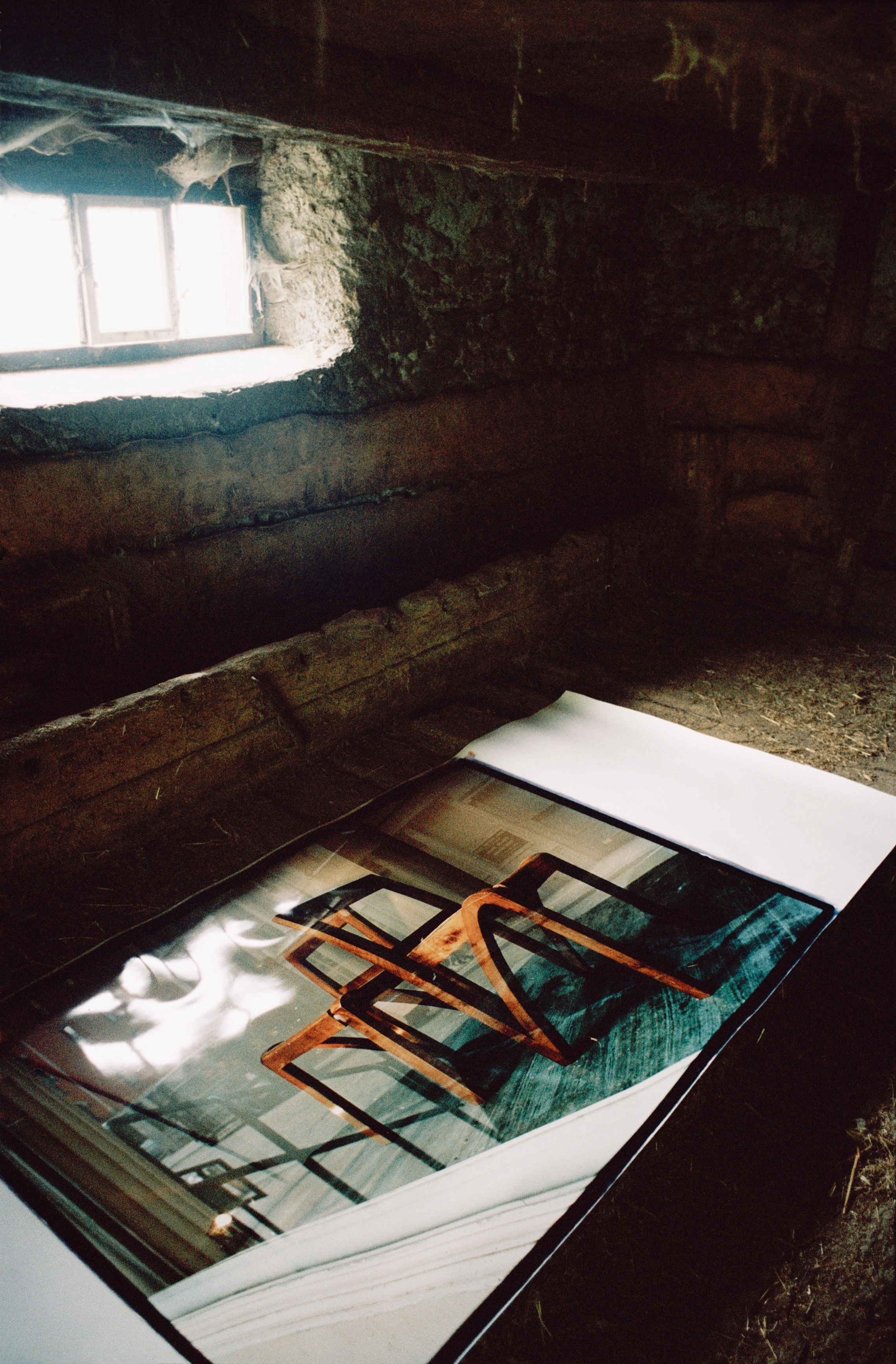The starting point of Katalin Deér’s photographic research is the built landscape, animated and shaped by the human hand. It is there that she walks about with her camera and finds her images. Her pictures of architecture lend buildings a light, sometimes even flat, appearance, as if they were paper cut-outs, folded and set into the landscape. Photography irons out the world, as the artist herself puts it.
Her interest in the sculptural dimension of architecture, as expressed in her photography, conversely motivated Deér to make pictures constituents of her sculptural works. Her search for material, physical supports for her pictures — and not just a form of presentation — led her to experiment with plaster, stucco marble, and concrete; she also had portable elements made to resemble table-tops or freestanding partitions of the kind used in exhibitions; and instead of simply laying out the pictures, she began incorporating photographs into the material of the panels during the production process. Becoming an integral part of these surfaces does not change the subject matter of the photographs, but it does modify their weight, volume, and the impression they make.
For some years now, Deér has worked intensely with stucco marble, a material which at the height of its popularity during the late Baroque period was used mainly to decorate churches. Later, during the nineteenth and early twentieth centuries, the material moved into the secular world, where it embellished the historicist and Jugendstil residences of the newly affluent merchant class. For her exhibition in Amden, Deér made a work on site that entailed embedding stucco marble between the coarsely cut, loose planks and bits of leftover hay on the uneven floor of the hayloft. In the course of many weeks, a number of people repeatedly polished the panel by hand, producing a smooth, shiny surface that invited touch. The second piece installed on the floor of the stalls below comprised a large-format photograph taken in New York in 1997 and enlarged for the first time for this exhibition. Deér exhibited it just as it was straight from the laboratory, with uneven edges and margins cut roughly and hastily to approximate the format of the paper. The photograph is a view from the outside of a shop window containing a few, simple and beautifully crafted wooden chairs dating from the early twentieth century. The reflections in the pane of glass through which Deér captures the two objects reveal what is happening behind the photographer — the street life that metaphorically returns the chairs to everyday life. Exhibited separately in Amden, the two works cannot be perceived simultaneously; but they are both about desire and about deep, multi-layered and unfathomable surfaces. The artist put it aptly when she described the works as “alien in this place.” What stucco marble connotes does not belong in a barn, and as a material it is not of our time. Yet Deér’s remark about this particular material also applies to the New York street scene rolled out on the dirty floor of the barn. The aesthetic significance of the exhibition relies on the visually communicated difference between the two works.
Writing about Walter Benjamin, Boris Groys asks if the distinction between original and copy is still meaningful. No, he says, for as he sees it, the only thing that distinguishes Modernism from the old times is that the originality of a work is not defined by its material properties but rather by its aura, its context, its place in history.1 In contrast, we imagine Katalin Deér arguing in terms of the concrete object (its physical presence and appeal) and wondering whether it might not be possible to relocate a picture as an object in reality, thus validating its aura simply by changing the material qualities of the photograph without affecting what it represents.
– Roman Kurzmeyer
- Boris Groys, “Die Topologie der Aura,” in —, Topologie der Kunst, München / Wien: Hanser, 2003, p. 40.

 Images
Images
 Info
Info




 Next Exhibition
Next Exhibition